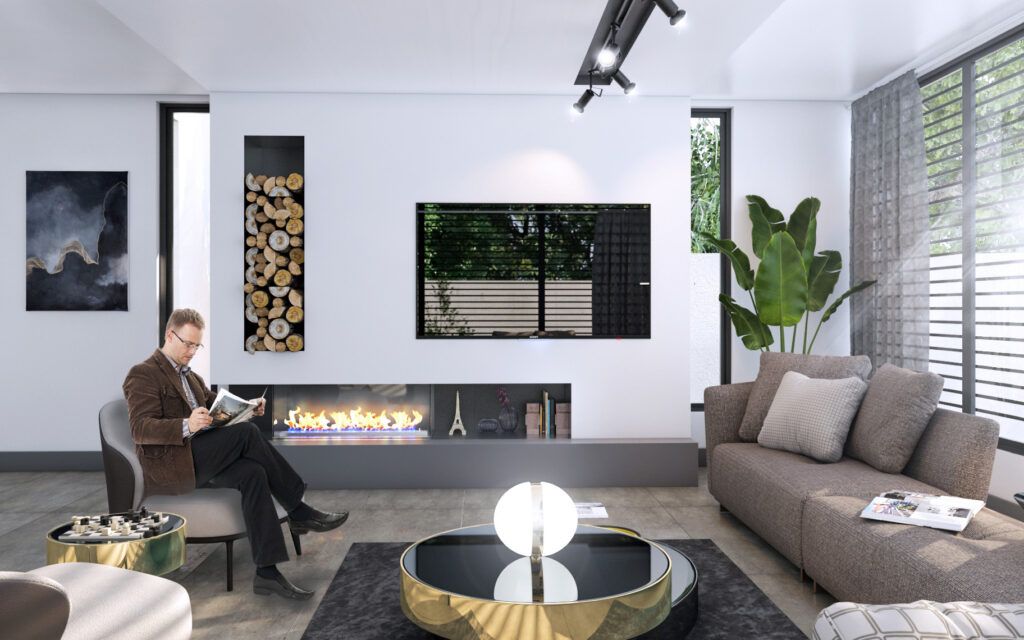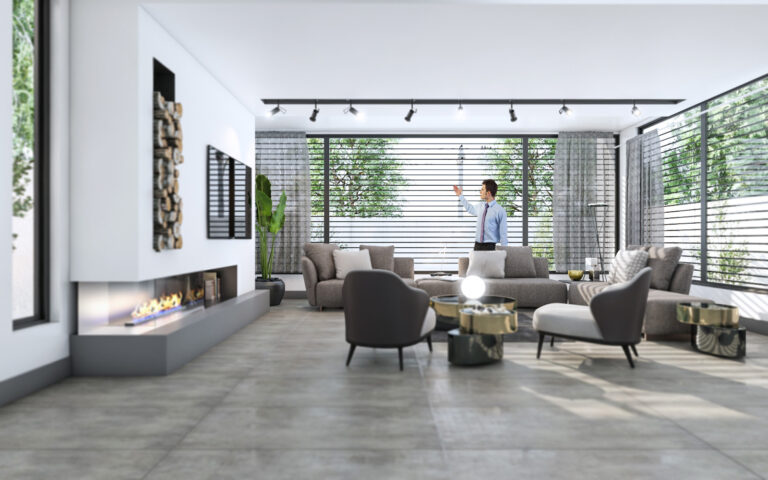
Architectural design and interior design are two essential fields in the construction and artistic industries, both playing a crucial role in creating beautiful, functional, and pleasant spaces. However, there are fundamental differences between these two disciplines. Architectural design focuses on the overall structure and functionality of a building, while interior design emphasizes the details of interior spaces and how people interact with them. In this article, we will explore the concepts, responsibilities, and key differences between these two fields.
1. What is Architectural Design?
1.1 Definition of Architectural Design
Architectural design is the process of planning, designing, and constructing buildings and urban spaces. This process involves structural design, aesthetics, functionality, safety, and environmental harmony. Architects not only focus on the appearance of a building but also consider essential factors such as structural integrity, ventilation, lighting, and energy efficiency.
1.2 Responsibilities of an Architect
- Designing residential, commercial, office, and public buildings
- Ensuring compliance with safety standards and building regulations
- Balancing aesthetics, functionality, and sustainability
- Managing construction projects and overseeing implementation
- Utilizing modern technologies like Building Information Modeling (BIM)
1.3 Characteristics of Architectural Design
- Focus on the external appearance and overall structure of the building
- Consideration of engineering and technical aspects
- Incorporation of urban planning principles and environmental impact
- Connection between interior and exterior spaces
2. What is Interior Design?
2.1 Definition of Interior Design
Interior design is the art and science of optimizing interior spaces to enhance aesthetics, functionality, and comfort. Interior designers focus on selecting colors, materials, furniture, lighting, and decorations to create a harmonious and pleasant environment.
2.2 Responsibilities of an Interior Designer
- Optimizing space layout for maximum efficiency
- Selecting appropriate materials, colors, and textures
- Implementing proper lighting design to set the desired mood
- Designing furniture and maximizing small spaces
- Considering psychological aspects of color and form in design
2.3 Characteristics of Interior Design
- Focus on beauty and functionality of interior spaces
- Emphasis on user interaction with the environment
- Use of decorative elements to enhance spatial perception
- Flexibility and adaptability in design
3. Key Differences Between Architectural Design and Interior Design
1.3. Interior design (features)
- Primary Focus: Aesthetics, layout, comfort of interior spaces
- Scope of Work: Interior details, colors, furniture
- Required Skills: Décor, color theory, lighting design
- Stage of Involvement: After the structure is completed, in the final phase
- Main Goal: Designing a comfortable and practical interior
2.3. Architectural Design (features)
- Primary Focus: Structure, form, overall building functionality
- Scope of Work: Designing the entire building, structural planning
- Required Skills: Engineering, urban planning, structural design
- Stage of Involvement: After the structure is completed, in the final phase
- Main Goal: Creating a stable, safe, and aesthetically pleasing structure
4. The Relationship Between Architectural and Interior Design
Despite their differences, architectural design and interior design complement each other. A well-executed architectural design provides the perfect foundation for a suitable interior design. At the same time, good interior design can enhance the quality of life in a space and strengthen the functionality of architectural elements.
In many modern projects, collaboration between architects and interior designers is crucial. This partnership ensures that buildings are not only structurally sound but also have interiors that meet users’ needs.
Conclusion
Both architectural and interior design play essential roles in creating ideal spaces, but their goals and areas of focus differ. Architecture is concerned with structure, safety, and sustainability, whereas interior design prioritizes beauty and functionality within the space. To achieve an optimal environment, coordination between these two disciplines is essential.


No comments yet.